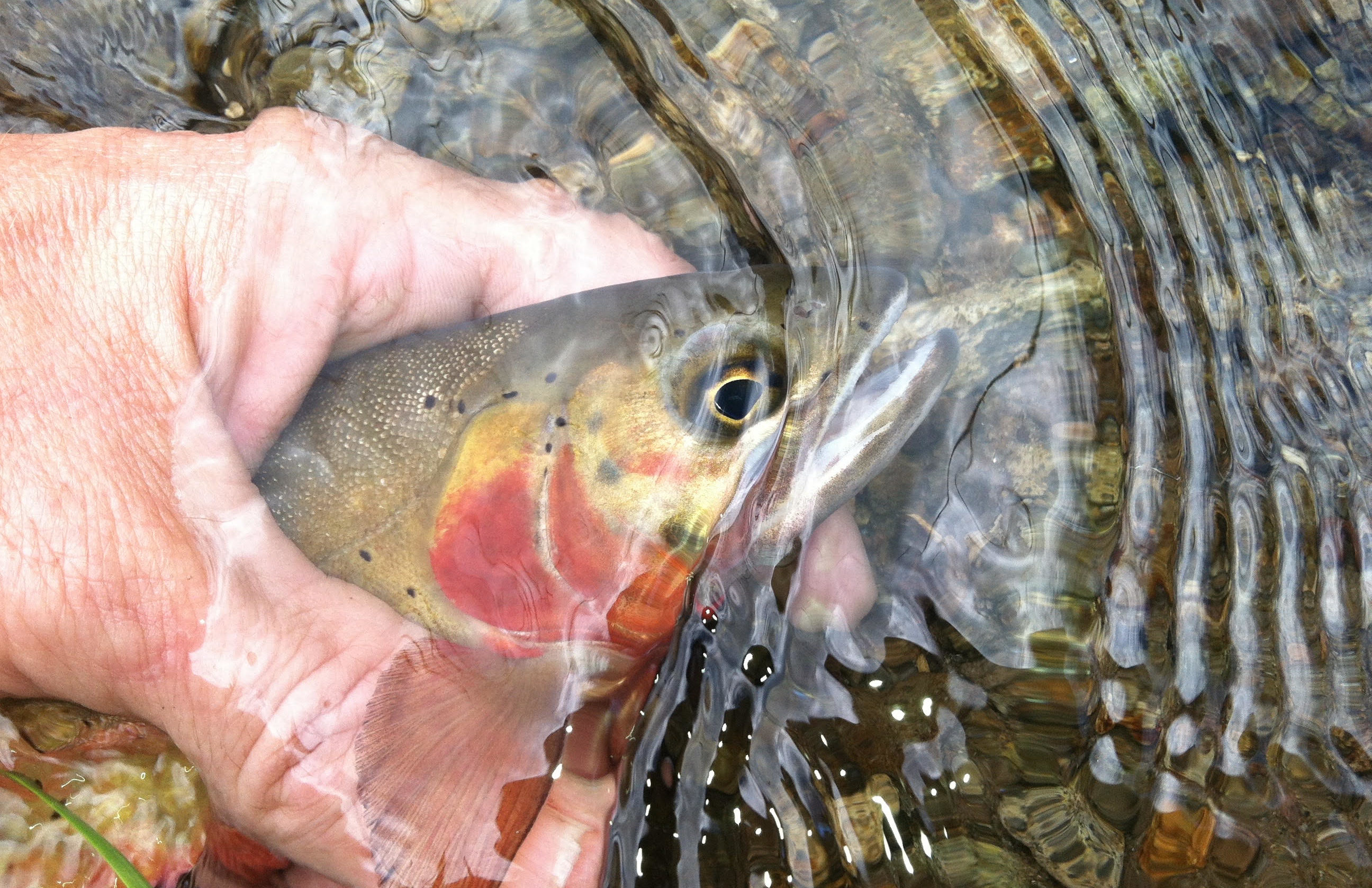I’m no art critic, but I know a good piece of work when I see it. Impressionistic paintings by the likes of Monet, Renoir, and Degas certainly do impress me, but maybe not in the way you might think. To me, invariably, these beautiful works in the genre appear unfinished, as though the artist lost the creative capital to complete the job or had to find wage work and didn’t come back to wrap up. The style blurs the contours between illusion and reality, and that, to my mind, is part of its allure.
I have a recollection from many years ago that, whenever I call it to mind, summons an impressionistic scene in the opus behind my eyes. A tiny mountain creek pours over cream-colored marl in little pools and flat riffles of pea-sized gravels in water shallow enough to step in and not get your ankles wet. Sprigs of green and tan grasses lay beneath scrawny alder branches, drooping over the creek banks. Early morning sunshine dapples like wet diamonds on the water and backlights a stand of tall, fat ponderosa pines in the flat bottoms. Dust and bugs aloft are illuminated in sunlight waft in the quiet air.
The sun rises sharply over a steep hillside where adventurous pinons cling to the striated layers of bare gray rock and fine volcanic tuff cones so common in the Jemez Mountains of northern New Mexico. Little trout as big as a young boy’s hand dash for the dark confines afforded by the streamside grasses after one of their own throws caution aside and bites a hook. The trout’s wet, pint-sized body writhes in my palm; I can feel its cold muscles flex as it glistens back at me in flashes of silver over orange specks on an olive body.
The wonder of that moment has never left me. That sense of marvel was inscribed on my psyche that day. A little piece of a cold mountain stream, slender enough in places to straddle, harbored colorful, living creatures. The wonderment still feeds my desire to stay involved in conservation.
My family made weekend forays into the Jemez Mountains when I was very young. We often visited this brook, which coursed past a piece of property that my great grandparents filed on in the late 1890s. My granddad was born there in 1903, nearly a full decade before New Mexico was welcomed into the Union. My great-grandma held title to the parcel surrounded by Santa Fe National Forest until around 1935.
I will never know this for sure, but I fancy that my folks caught native Rio Grande cutthroat trout from these waters before non-native trout species swamped the native fish. It’s easy for me to imagine the surprise and wonderment another would feel pulling a small trout from a dark undercut that appeared covered in blood as though its throat had been slit. I know from Forest Service records as well as my great-grandma’s writings that my ancestors lived a hardscrabble life. My folks likely had very little time to for recreating, too busy ensuring they had the resources for the next day or next week or next season at this high-elevation farmstead. Cold comes on early and stays late at 7,400 feet.
I have no illusions that my family will ever own this parcel of land again, and I have to square with the reality that trout, no matter the species, will probably not swim here again in my lifetime. A wildfire obliterated a large swath of forest six years ago, taking trees and trout and sending them into the stratosphere in towering anvil-headed plumes of smoke.
But longing is the heart’s treasury. I have a longing to see native trout in native habitats—a nostalgia for what was and what could be—to see Southwestern trout species swim in waters as nature would have it.
Rio Grande cutthroat trout, Apache trout, and Gila trout—all three of them naturally adorned the Southwestern landscape. They carry in their colors the imprint of nature. Pretty trout live in pretty places, and they own enough crimson, copper, and cream that any impressionist would be pleased to paint them. And native trout conservation, like impressionism . . . well, it is an unfinished business.
Craig Springer, U.S. Fish and Wildlife Service – Southwest Region, External Affairs, Albuquerque, New Mexico

